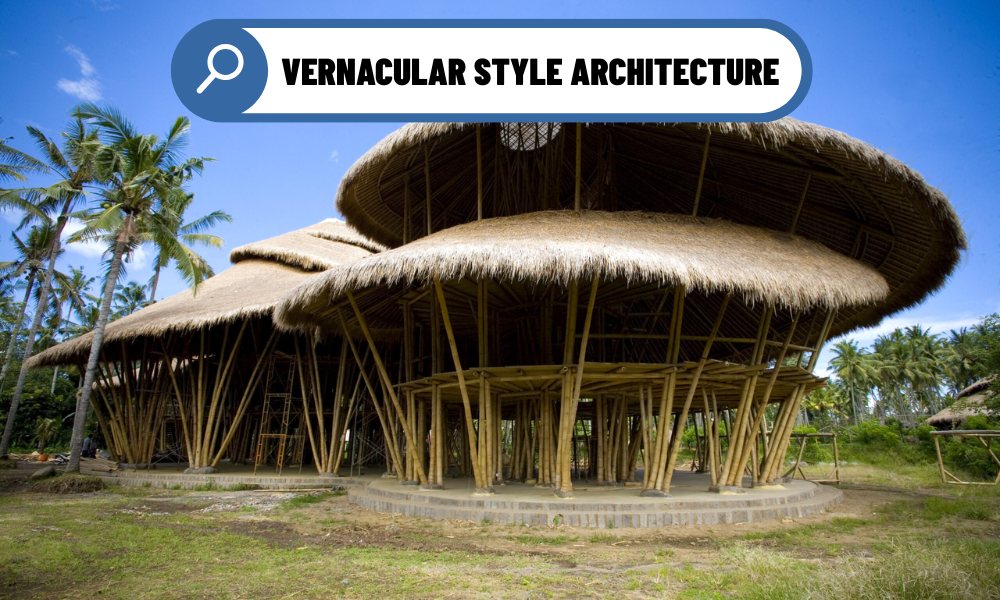In a world of sleek modern towers and prefab homes, vernacular style architecture stands out as a quiet but powerful expression of culture, climate, and community. Rooted in tradition and built with locally sourced materials, vernacular architecture reflects the wisdom of generations and the character of place. But it’s not just about nostalgia—this architectural approach offers valuable lessons for sustainable, resilient design in a changing world.
What Is Vernacular Architecture?
Vernacular architecture refers to building styles that are designed based on local needs, available resources, and regional traditions, without the influence of formally trained architects. These buildings are often constructed by local craftsmen or communities using techniques passed down through generations.
Unlike contemporary architecture, which often imposes a global aesthetic, vernacular architecture responds to its environment, adapting naturally to local climate, terrain, and culture.
Key Characteristics of Vernacular Style Architecture
1. Use of Local Materials
One of the hallmarks of vernacular architecture is its reliance on locally sourced materials. Whether it’s adobe in the American Southwest, bamboo in Southeast Asia, or stone in the Mediterranean, these materials are not only abundant but also well-suited to the regional climate.
2. Climate Responsiveness
Vernacular buildings are inherently sustainable because they evolve in harmony with local weather patterns. Thick mud walls regulate indoor temperature in hot climates, while steeply pitched roofs efficiently shed snow in colder regions. These passive design strategies minimize the need for mechanical heating or cooling.
3. Cultural Reflection
Architecture is a language, and vernacular buildings speak the dialect of their people. The form, layout, and ornamentation of these homes often reflect cultural beliefs, social structures, and daily habits. For example, the courtyard homes in China or the open verandas in Indian houses are more than design choices—they are part of a cultural identity.
4. Community-Centric Construction
Built by and for the community, vernacular structures often evolve organically, adapting over time to meet changing needs. The knowledge of building techniques is usually shared within the community, creating a deep sense of ownership and resilience.

Examples of Vernacular Architecture Around the World
Japanese Minka Houses
These rural homes, built with wood, thatch, and earth, feature steeply sloped roofs to shed snow and elevated floors to reduce humidity—perfectly adapted to Japan’s diverse climate.
Berber Houses in North Africa
Constructed from stone or mudbrick, Berber homes are clustered in mountain valleys and use natural insulation to withstand both extreme heat and cold.
The Trulli of Southern Italy
These unique limestone houses with conical roofs are dry-stacked without mortar and offer natural cooling—a striking example of form meeting function.
The Nipa Huts of the Philippines
Lightweight and elevated on stilts, these bamboo structures are built to withstand tropical storms and promote airflow, a testament to intuitive climate-responsive design.
Why Vernacular Style Architecture Matters Today
In the age of global warming, rising construction costs, and cultural homogenization, vernacular architecture offers a sustainable and meaningful alternative. Its principles can inspire architects and developers to:
- Design for local climate, reducing reliance on energy-intensive HVAC systems
- Use natural, renewable materials to lower the carbon footprint
- Incorporate cultural context for more authentic and livable environments
- Build with communities, not just for them
There’s growing interest in reviving vernacular techniques through modern interpretations—combining traditional wisdom with contemporary materials and methods. This hybrid approach can lead to structures that are both efficient and culturally grounded.
Modern Adaptations: Vernacular Meets Innovation
Some architects are integrating vernacular concepts into contemporary designs:
- Earthships in New Mexico use passive solar heating and recycled materials
- Green villages in Bali blend bamboo craftsmanship with modern engineering
- Passive Houses adopt vernacular ideas of insulation and airflow in high-tech ways
These examples prove that vernacular style architecture isn’t outdated—it’s evolving, offering tools to address today’s architectural and environmental challenges.
A Future Rooted in the Past
Vernacular style architecture is more than just old buildings made with mud or wood. It’s a philosophy—a way of thinking about architecture as an extension of nature, culture, and human need. As we face global challenges, revisiting the wisdom embedded in these time-tested techniques may be the most forward-thinking move we can make.
By embracing vernacular design principles, we don’t just preserve the past—we build smarter for the future.
